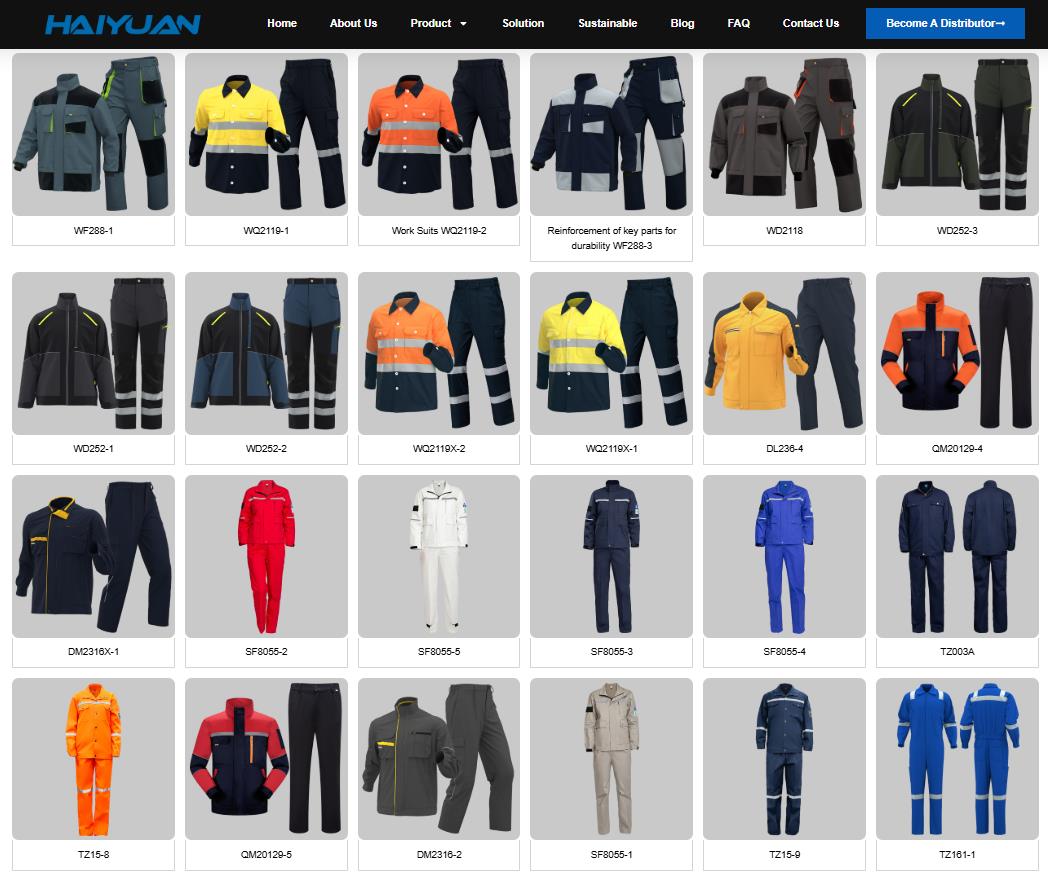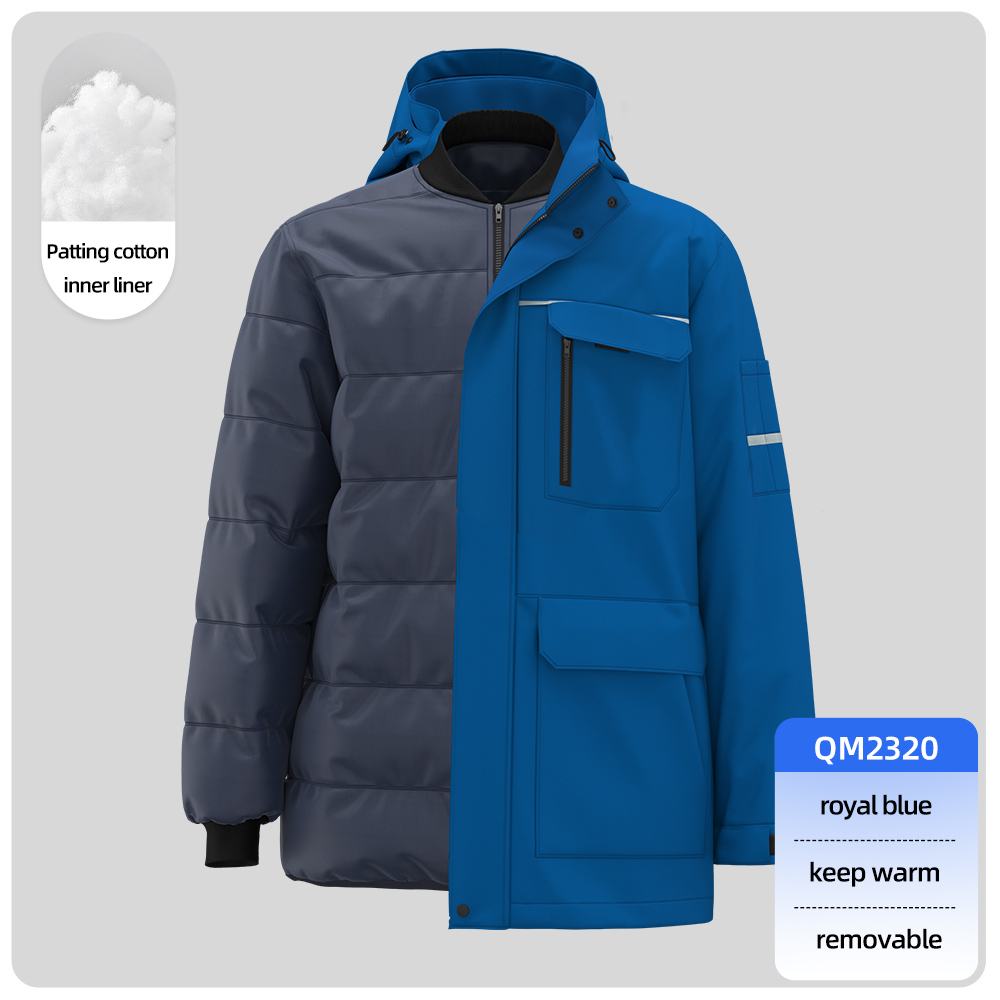Clothing for men who are drilling workers is highly specialized and prioritizes safety, durability, and mobility. The specific gear can vary depending on the environment (e.g., construction site, mining, water well drilling, or an oil rig), but the core principles are the same.
Here is a detailed breakdown of the typical work clothes for a male drilling worker.
The Core Principle: Safety First
The primary hazards include heavy machinery, rotating equipment, flying debris, heavy materials, noise, and often, exposure to the elements. Therefore, every item of clothing is chosen to mitigate these risks.
Standard Clothing & Personal Protective Equipment (PPE)
This is a head-to-toe guide, from essentials to specialized gear.
1. Head Protection
-
Hard Hat (Safety Helmet): Non-negotiable. Protects from falling objects, bumps, and electrical shock. It must be ANSI/ISEA certified. Colors often indicate the worker’s role (e.g., supervisor, new worker).
-
Hearing Protection: Drilling is extremely loud. Earplugs or noise-canceling earmuffs are essential to prevent long-term hearing damage.
2. Upper Body
A driller’s upper bodywear not only provides warmth and protection but also serves as a crucial piece of personal protective equipment. Beyond standard styles, for use in flammable and explosive environments (such as oil and gas drilling and chemical operations) or high-intensity work, these garments must incorporate four core features: flame retardancy, anti-static properties, wear resistance, and high visibility.
Long-Sleeved Shirt: A durable, heavyweight FR (Flame-Resistant) shirt is often required, especially if there’s a risk of sparks. For other drilling work, a thick cotton or canvas work shirt is standard to protect arms from abrasion, sun, and debris.
High-Visibility (Hi-Vis) Vest: Often worn over the shirt on construction or roadside sites to ensure the worker is easily seen by equipment operators.
-
Anti-static function:
-
Purpose: Prevents static sparks from friction with clothing, eliminating the significant safety hazard of igniting flammable gases and dust. This is a mandatory requirement for work in areas such as oil and gas drilling platforms and chemical plants.
-
How it works: Conductive fibers (usually carbon fibers or metal filaments) are woven into the fabric. These fibers form a network that safely and evenly conducts static charges generated by the body away and dissipates them, preventing charge buildup.
-
Standards: Complies with relevant safety standards (such as EN 1149) to ensure its reliable anti-static performance.
-
-
Wear-resistant function:
-
Purpose: To resist the friction and scratches frequently caused by rough equipment, drill pipes, rock surfaces, etc. during drilling operations, greatly extend the service life of work clothes, and ensure the integrity and protection of the underlying clothing.
-
Implementation:
-
High count and high density fabric: woven with stronger and tighter yarns to improve the wear resistance of the fabric itself.
-
Reinforced design: Thickening or double-layer fabric is used in key areas that are prone to wear, such as:
-
Shoulders: Susceptible to wear and tear when carrying equipment.
-
Elbows: Frequently flexed and supported.
-
Front and pockets: Subject to frequent friction with tools and equipment.
-
-
-
Common styles and designs:
-
Long-sleeved shirt or jacket: Basic style that provides full upper body and arm protection.
-
Coveralls: Provides integrated protection from head to toe, effectively preventing dust and debris from entering through the waist gap, providing higher safety.
-
Materials: Typically made from a cotton-polyester blend that’s anti-static and abrasion-resistant. Cotton provides comfort, while polyester enhances strength and abrasion resistance, and is blended with conductive yarn for anti-static properties.
Summary table integrating all functions
| Features | Implementation and design | Core Purpose |
|---|---|---|
| Basic protection | Long sleeves, heavyweight fabric | Anti-scratch, anti-scald, anti-sun |
| Fire retardant | FR (Flame-Resistant) fabrics (such as HengLu® or FR treated cotton) | It does not burn or melt when exposed to fire, providing time for escape |
| Anti-static | Woven with conductive fibers to meet safety standards | Eliminate static sparks to prevent flammable materials from detonating |
| Highly wear-resistant | High-density weaving, reinforcement of key parts (shoulders, elbows) | Extend the life of clothing and ensure continuous protection |
| High visibility | You can wear a Hi-Vis reflective vest or directly use a FR jacket with reflective strips | Clearly identified by machine operators in complex environments to prevent collisions |
3. Hands
-
Heavy-Duty Work Gloves: Typically made of leather or a durable synthetic material like Kevlar. They protect hands from sharp edges, pinch points, abrasion, and vibration from the drilling equipment. The exact type (e.g., rigger gloves, impact gloves) depends on the task.
4. Lower Body
-
FR Pants or Heavy-Duty Work Pants: Made from materials like durable cotton canvas or denim. They are designed to resist tearing and abrasion. FR pants are mandatory on sites with fire hazards. Many styles feature reinforced knees and multiple pockets for tools.
5. Footwear
-
Steel-Toe Boots: This is mandatory. The boots must have a protective toe cap.
-
Essential Features:
-
Slip-Resistant & Oil-Resistant Soles: For traction on slippery, muddy, or greasy surfaces.
-
Electrical Hazard (EH) Rating: To reduce the risk of electric shock.
-
Waterproof: To keep feet dry in wet conditions.
-
Ankle Support: High-top boots provide crucial support on uneven ground.
-
Metatarsal Guard: An added layer of protection over the instep for heavy work.
-
Specialized PPE for Specific Hazards
This gear is worn in addition to the standard clothing.
-
Eye Protection: Safety glasses are mandatory at all times. For grinding, chipping, or tasks creating more debris, a full face shield is used over the safety glasses.
-
Respiratory Protection: Depending on the material being drilled (concrete, rock, etc.), a dust mask (for non-toxic dust) or a respirator (for silica dust or chemical vapors) is required.
-
Fall Protection: If working at height on a drilling platform or derrick, a full-body harness with a lanyard is essential.
Summary Table: Drilling Worker’s Outfit by Scenario
| Scenario | Typical Clothing & PPE | Key Rationale |
|---|---|---|
| Construction Site (e.g., Foundation Drilling) | Hi-Vis shirt/vest, durable work pants, steel-toe boots, hard hat, safety glasses, gloves. | Visibility, impact protection, foot protection from heavy materials. |
| Geotechnical / Mineral Exploration | Durable long-sleeve shirt, heavy-duty pants, rugged hiking-style boots with safety toe, hard hat, gloves, eye/ear protection. | Durability for remote locations, ankle support on rough terrain. |
| Oil/Gas Rig Drilling | Full FR clothing (shirt & pants), steel-toe boots, hard hat, safety glasses, gloves, ear protection. Life vest offshore. | Maximum protection against flash fires and all industrial hazards. |
What They AVOID Wearing
-
Loose Clothing: Baggy sleeves or dangling straps can get caught in rotating machinery.
-
Jewelry: Rings, necklaces, and watches can cause severe injuries (like “degloving”) if caught.
-
Street Clothes or Sneakers: These offer zero protection and are not durable enough.
-
Synthetic Fabrics: Unless they are certified FR, materials like polyester can melt onto the skin when exposed to high heat.
In short, a drilling worker’s clothing is a integrated system of protective gear. It’s designed to be a robust barrier against a wide range of physical and environmental hazards, allowing them to perform demanding work safely.





